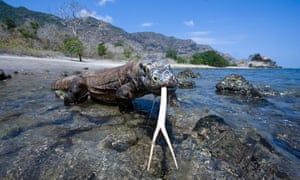On Komodo island, tourists and giant lizards will just have to get along
Who needs Jurassic Park? In Indonesia, giant reptiles have their own
national park, but a new airport development is bringing an influx of
tourists to their domain

Now, a major upgrade of Labuan Bajo regional airport is set to bring more tourists to the 29 islands that make up the Unesco-protected park, potentially threatening its eponymous beast. The airport used to handle 150,000 tourists a year; now it can accommodate 1.5 million, with its new terminal and lengthened runway. Garuda Indonesia now flies there at weekends from Bajawa and Denpasar.
People here truly appreciate the dragon, my guide, Arman Rikardus, told me. He said increasing tourism meant that locals like him didn’t have to move to Bali to find work, although they have witnessed a sudden rise in inflation as the number of people moving to Labuan Bajo pushed up the cost of food and housing.
He also warned that if tourism gets out of control, the demand for new infrastructure could cut into the dragon’s already limited habitat. At present, less than 10% of the national park is actually open to the public, so many of the dragons are able to live out their lives without ever running into a selfie-snapper.
Currently, the biggest threat to the dragons is the poaching of deer which is their prey, and the rise of human populations. The species shares the park with nearly 4,000 people, many of whom supplement their incomes by selling curios and snacks to tourists. The dragon dominates the food chain and underpins the local economy.
The local government hopes that tourists will start venturing beyond dragons: Flores is home to several stunning volcanoes, rare birds, and the cave where scientists discovered homo floresiensis – Flores man, also known as the hobbit of Indonesia. The region has some of the best diving and snorkelling on the planet. For all that, the Komodo dragon is still the star attraction: outside the new airport sits a massive statue of the area’s favourite resident. You can take a selfie with this one without the risk of losing a limb.